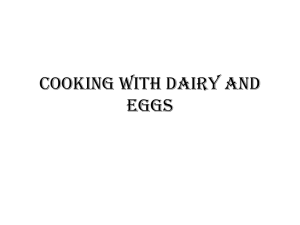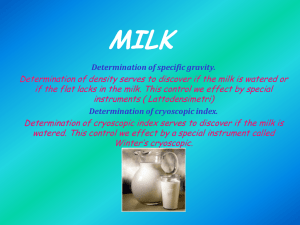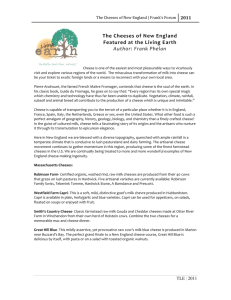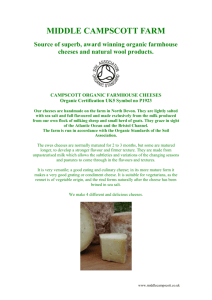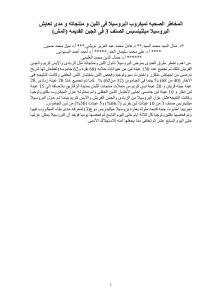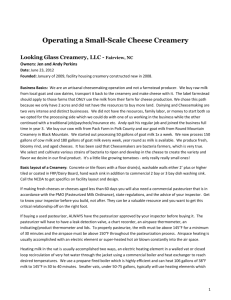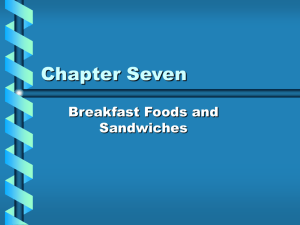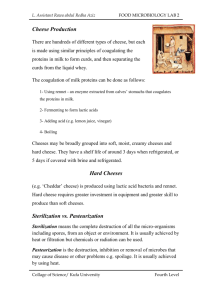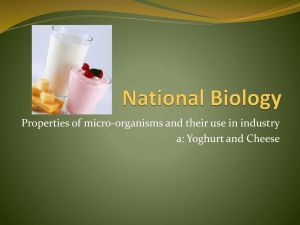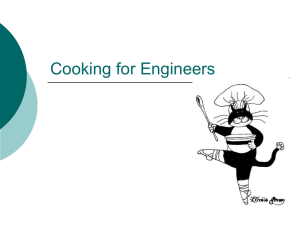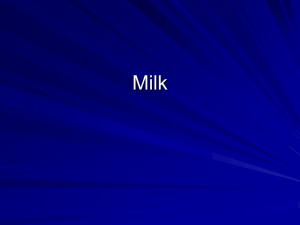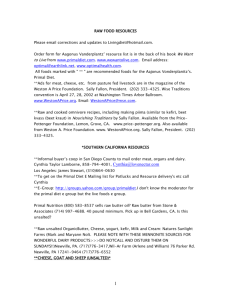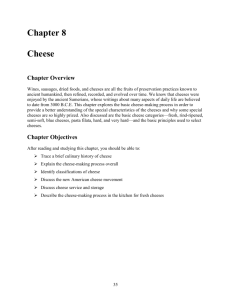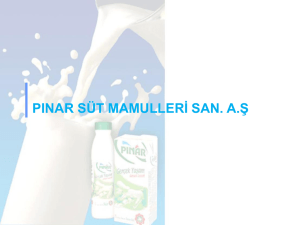Dairy - leogems.org
advertisement
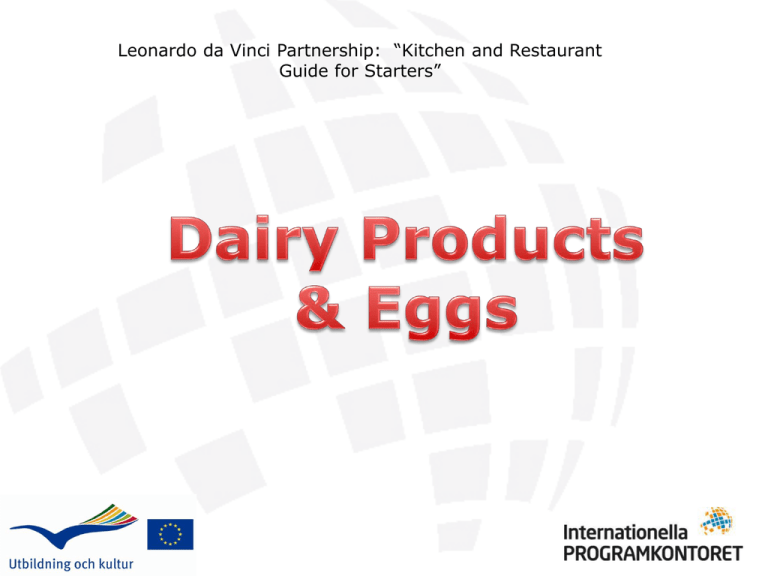
Leonardo da Vinci Partnership: “Kitchen and Restaurant Guide for Starters” Milk • Milk is one of the most common staple foods. It contains 18 of the 22 most important nutrients humans need on a daily basis. It is customary to use milk for cooking, especially for desserts and baking. Milk is also often used as a drink and in tea or coffee. Milk comes from a variety of sources, but predominantly cows. Milk is categorized by the fat content: whole milk (≈ 4%), low-fat milk (≈2%) and skimmed milk (≈0.1%) Cream • Cream is from cow’s milk, but contains much less water and more fat. Cream is used as an ingredient in many dishes and as well as a topping in its whipped form. For example, cream is a useful milk product that adds color and a creamy texture to the sauce. It also comes in different forms such as sour cream and créme fraîche. Yoghurt • Yoghurt is a bacterial cultured milk product and thus is nutrientrich. Yoghurt has similar levels of fat content like milk. Unlike milk, yoghurt is often flavored, mostly with fruit. Plain yoghurt is used in cooking, but is mostly used in some cold sauces. Butter • Butter is a dairy product that is heavily used when you are cooking. Butter is a common ingredient in recipes. Additionally if you must fry vegetables, butter is effective because it helps prevent food from getting burned. Butter is also used on sandwiches in many cultures. Cheese • Cheese is a very common dairy product that is used worldwide. It is used in sauces, in dressings, on sandwiches or for other cooking purposes. Cheese is also quite often eaten by itself. The cheese is cultured, aged and used differently depending on the local customs. The culturing process plays a key role in how the cheese is classified Hard & Semi-hard Cheeses • These cheeses can be sliced, cut or grated, depending on the texture and density. They are able to be used numerous ways in the preparation of food as well as being eaten in its own right. Soft Cheese • Soft cheeses come in a variety of consistencies as well as flavors. It is often cut and eaten with crackers among other commodities and drinks. Blue Cheese • Blue cheeses are specially cultured to get veins of blue-green or blue-gray molds within the cheese. The cheese can be eaten on its own, but is also melted or crumbled over food. Fresh Cheese • Like all other types of cheese, local specialties are often used in cooking. Feta, cottage and cream cheeses are well-known fresh cheeses. Fresh cheese does last very long since there are little-to-no perservatives added. Eggs • Eggs are a common main dish due to their proteinrich nature. An egg consists of the egg yolk and egg whites. It is customary to peel an egg after boiling it or to fry or poach it after cracking it open. You can also use them in cooking and baking. Fried Eggs • Fried eggs are served in a variety of ways and can be eaten for every meal time. The egg yolk can be runny or solid, sunny-side up or sunnyside down. Boiled Eggs • Boiled eggs are very common for breakfast in most countries. The egg becomes solid. The length of time the egg is boiled depends on if you want the yolk hard-boiled or soft-boiled. Scrambled Eggs • Another common preparation method for eggs is to use a whisk to beat the eggs so that the yolks and whites become mixed. Then you fry the eggs. Pictures in the presentation are taken from the public domain via the Internet. The presentations are used for non-profit educational purposes.
